
Count Gyula Andrássy de Csíkszentkirály et Krasznahorka the Younger was a Hungarian politician.
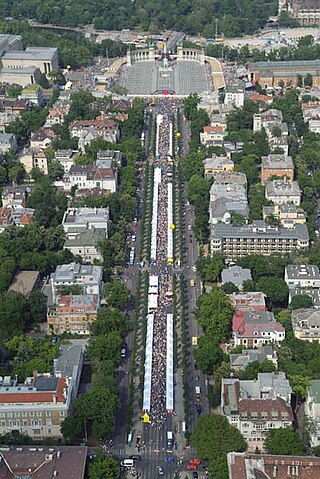
Andrássy Avenue is a boulevard in Budapest, Hungary, dating back to 1872. It links Erzsébet Square with the Városliget. Lined with spectacular Neo-renaissance mansions and townhouses featuring fine facades and interiors, it was recognised as a World Heritage Site in 2002. It is also one of Budapest's main shopping streets, with fine cafes, restaurants, theatres, embassies and luxury boutiques. Among the most noticeable buildings are the State Opera House, the former Ballet School, the Zoltán Kodály Memorial Museum and Archives, the Hungarian University of Fine Arts, and the Ferenc Hopp Museum of East Asian Arts.

Trebišov is a small industrial town in the easternmost part of Slovakia, with a population of around 25,000. The town is an administrative, economic and cultural center with machine (Vagónka) and building materials industries.

Hősök tere is one of the major squares in Budapest, Hungary, noted for its iconic Millennium Monument with statues featuring the Seven chieftains of the Magyars and other important Hungarian national leaders, as well as the Memorial Stone of Heroes, often erroneously referred as the Tomb of the Unknown Soldier. The square lies at the outbound end of Andrássy Avenue next to City Park (Városliget). It hosts the Museum of Fine Arts and the Palace of Art (Műcsarnok). The square has played an important part in contemporary Hungarian history and has been a host to many political events, such as the reburial of Imre Nagy in 1989. Most sculptures were made by sculptor György Zala from Lendva, with one made by György Vastagh.

The Hungarian Parliament Building, also known as the Parliament of Budapest after its location, is the seat of the National Assembly of Hungary, a notable landmark of Hungary, and a popular tourist destination in Budapest. It is situated on Kossuth Square in the Pest side of the city, on the eastern bank of the Danube. It was designed by Hungarian architect Imre Steindl in neo-Gothic style and opened in 1902. It has been the largest building in Hungary since its completion. The architectural style of the Hungarian parliament building was influenced by the gothic Vienna City Hall, and the renaissance elements like the cupola was influenced by the Maria vom Siege church in Vienna.

The Baroque Revival, also known as Neo-Baroque, was an architectural style of the late 19th and early 20th centuries. The term is used to describe architecture and architectural sculptures which display important aspects of Baroque style, but are not of the original Baroque period. Elements of the Baroque architectural tradition were an essential part of the curriculum of the École des Beaux-Arts in Paris, the pre-eminent school of architecture in the second half of the 19th century, and are integral to the Beaux-Arts architecture it engendered both in France and abroad. An ebullient sense of European imperialism encouraged an official architecture to reflect it in Britain and France, and in Germany and Italy the Baroque Revival expressed pride in the new power of the unified state.

Renaissance Revival architecture is a group of 19th-century architectural revival styles which were neither Greek Revival nor Gothic Revival but which instead drew inspiration from a wide range of classicizing Italian modes. Under the broad designation Renaissance architecture 19th-century architects and critics went beyond the architectural style which began in Florence and Central Italy in the early 15th century as an expression of Renaissance humanism; they also included styles that can be identified as Mannerist or Baroque. Self-applied style designations were rife in the mid- and later 19th century: "Neo-Renaissance" might be applied by contemporaries to structures that others called "Italianate", or when many French Baroque features are present.

Fellner & Helmer was an architecture studio founded in 1873 by Austrian architects Ferdinand Fellner and Hermann Helmer. They designed over 200 buildings across Europe in the late 19th and early 20th century, which helped bind the Austro-Hungarian Empire together and cement Vienna as its cultural center. While most of the work stood in the former Austro-Hungarian Empire, others can be found from Switzerland to present-day Ukraine. Frequent collaborators for integrated exterior and interior art work include Gustav Klimt, Hans Makart, Theodor Friedl, and other significant artists.
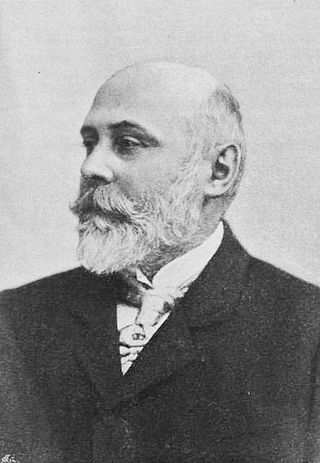
Ödön Lechner was a Hungarian architect, one of the prime representatives of the Hungarian Szecesszió style, which was related to Art Nouveau in the rest of Europe, including the Vienna Secession. He is famous for decorating his buildings with Zsolnay tile patterns inspired by old Magyar and Turkic folk art, which are combined with modern materials such as iron.

Alajos Hauszmann, from 1918 Hauszmann de Velencze, was a Hungarian architect, professor, and member of the Hungarian Academy of Sciences.

Tiszadob is a village in Szabolcs-Szatmár-Bereg county, in the Northern Great Plain region of eastern Hungary.
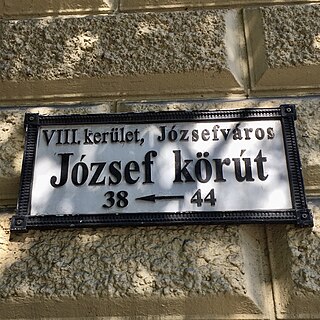
Budapest's Palotanegyed forms an inner part of Pest, the eastern half of Budapest. Known until the communist period as the ‘Magnates’ Quarter’, it consists of the most westerly part of the city's Eighth District, or Józsefváros, which was named on 7 November 1777 after Joseph II, Holy Roman Emperor and Archduke of Austria (1741-1790), who reigned 1765-1790. . Józsefváros developed immediately east of the medieval walls of Pest and was originally called Lerchenfeld or the Alsó-Külváros. The Palotanegyed's borders are the Múzeum körút to the west, Rákóczi út to the north, the József körút to the east and Üllői út to the south. There is an extensive photo archive of the Palace District at the Fortepan website.

Epreskert Art Colony was an artists' colony in Budapest in the last decades of the 19th and the first half of the 20th century. Among the artists who worked and lived there the most important were sculptors György Zala and Adolf Huszár, and painter Árpád Feszty.
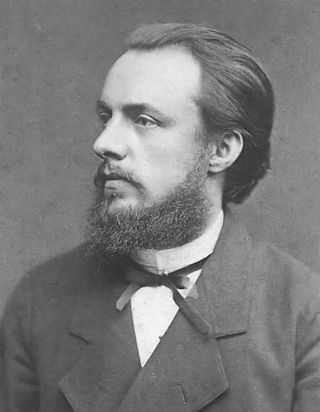
Gotthilf Ludwig Möckel or Ludwig Möckel was a German architect

Countess Etelka (Adelhaid) Szapáry de Szapár, Muraszombat et Széchy-Sziget was a Hungarian noblewoman and a landowner.

Countess Eleonóra Zichy de Zich et Vásonkeő was a Hungarian noblewoman and a landowner.

Josip Vancaš was an Austro-Hungarian and Yugoslav architect who spent most of his career in the Bosnian city of Sarajevo, where he designed over two hundred buildings. He also designed important buildings in present-day Croatia and Slovenia. He was also the first conductor of the Männer-gesang-verein in Sarajevo, at its founding in 1887.
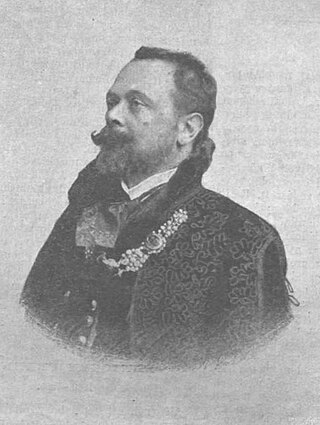
Count Tivadar Andrássy de Csíkszentkirály et Krasznahorka was a Hungarian politician, Member of Parliament, painter, and art collector. He served as a member of the Hungarian Academy of Sciences, the National Museum, the Metropolitan Board of Public Works, and the House of Representatives economics committee.

Andrássy Castle is located in the north-eastern part of Hungary, in Tiszadob, Szabolcs-Szatmár-Bereg County. It was designed by Artúr Meinig, a.k.a. Arthur Meinig, for Count Gyula Andrássy, who was the second Foreign Minister of Austria-Hungary and first Hungarian prime minister.

Vilmos Freund was a Hungarian Jewish architect.





















